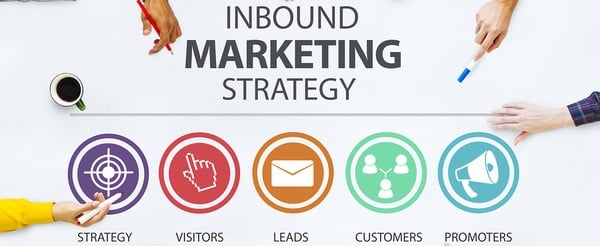How inbound marketing strategies can help your business
The two most important requirements for major success are: First, being in the right place at the right time, and second, doing something about it. –...
4 min read
Mark Parent
April 6, 2016 12:53:31 PM EDT

"Where did everybody go?"
If your organization is using traditional marketing and advertising methods, you may be asking yourself this question.
With the way consumers have embraced and come to rely on digital communications in recent years, the typical customer’s journey doesn’t follow that same path it used to.
Consider the following statistics:
So, if you are wondering where everybody went, the answer is clear: Your potential customers are online. This helps explain why traditional marketing methods like print advertising and direct mail are not delivering the same bang for the buck they once did. Today's consumers have moved on, and your marketing strategies must adapt to changing consumer behaviors.

If your organization isn't employing inbound marketing tactics, you
might be left wondering where your audience went. ![]()
Those changing consumer behaviors we talked about? That is precisely where inbound marketing methods can help your organization understand the changing habits of your audience and find the best approaches to connect with them.
Inbound capitalizes on the high level of engagement business-to-customer (B2C) and business-to-business (B2B) consumers have with the digital world. Inbound is expressly designed to reach a digital-savvy audience through multiple channels.
This makes sense. As much as traditional marketing efforts are strategically positioned to be seen by the largest possible audience (think Super Bowl ads or billboards on a busy highway), inbound marketing methods put your message in the places people now spend their time: online and on social media.
You are probably familiar with a lot of inbound tactics (search engine optimization, content marketing, blogging, etc.), but you may not know just how effective an inbound approach to marketing can be:
These statistics support the theory that engaging your target audience via inbound methods is a proven and consistent way to attract, nurture, engage, and convert leads. That being said, what can you do to use inbound marketing techniques to your advantage?

No matter what you do, your product is never boring. And inbound marketing gives
you a variety of ways to show your audience just how amazing you are. ![]()
According to "Inbound Marketing 2015: The Top Three Lessons from MarketingSherpa's Case Studies This Year," there are three basic things to remember to make your inbound marketing efforts effective.
1. Remember: Your product is never boring
Inbound methodology involves telling a story that captivates your audience. This does not mean that every piece of content must be mind-blowingly interesting, but it does mean that every piece of content must be something that is useful and informative. Mind-blowing is great, but to have a lasting impact, your content must be something that builds a relationship with your target audience.
For instance, if you sell building materials, your target audience might appreciate how-to videos about small do-it-yourself projects. If you run a dry cleaning business, your target audience might appreciate a blog about removing common stains from clothing. While these content examples are not direct pitches of your product or service, they serve to educate your target audience and keep your business front and center in their minds.
Interspersing such useful related content with pieces that are more directly promotional will get your message across effectively without your audience feeling browbeaten in the process.
2. Use strong visual elements to drive engagement across all channels
Your goal with visual content is to create an instantly recognizable signature for your business. Whether it is a logo, a certain color scheme, or a mascot of sorts, creating visual continuity in your marketing materials will establish your brand firmly in the minds of your target audience.
This visual continuity also includes responsive web design, which provides a consistent user experience whether your audience interacts with your company via desktop or mobile device.
3. Know which strategies or platforms will resonate with your audience
In the initial stages of creating an inbound strategy for your business, it is important to understand which social media platforms your audience actually uses. For instance, a B2B audience may be more likely to use LinkedIn than Facebook to access content.
Similarly, if your product is highly visual, you may want to center your inbound strategies on creating visual content on YouTube, Instagram, or Pinterest, where visual content is likely to be sought by your target audience.
While it takes time to find where your audience is likely to be, it is well worth the effort. The flexibility of inbound marketing allows you to take advantage of multiple methods of reaching potential leads, and enables you to make adjustments to your campaigns as needed to optimize exposure of your products and services to the right people, on the right platforms, at the right times.
If you are currently practicing traditional marketing approaches and are wondering how you can make the switch to implement inbound marketing strategies, read another one of our articles, "Moving from outbound to inbound marketing? Here's how to start."
Learn more about what it takes to plan, launch, analyze and update a modern marketing campaign in order to get the greatest return for your business: Get your free copy of our Blueprint of a Modern Marketing Campaign.
Make sure to connect with us on LinkedIn to get valuable insight on the latest news in marketing and website design. Follow us here:

The two most important requirements for major success are: First, being in the right place at the right time, and second, doing something about it. –...

Though B2B consumers continue to indicate a preference for inbound marketing over more traditional marketing methods, some B2B companies have been...

When you think of marketing automation, you might imagine a warehouse full of robots or a collection of algorithms that can click buttons and...